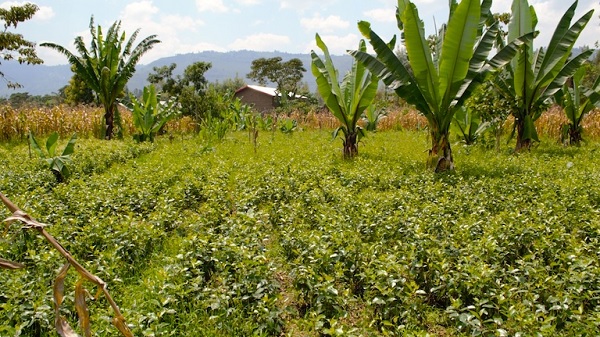
In recent decades farmers in such areas as Wondo Genet of southern Ethiopia have moved toward growing only khat, a drug banned in most countries but still legal in Ethiopia and neighboring countries, on their small farms.
By Tesfa-Alem Tekle (Mongabay)
WONDO GENET–Agroforestry has been the major agricultural farming system in southern Ethiopia’s Southern Nations, Nationalities and Peoples (SNNP) regional state for millennia, passed on from generation to generation.
For centuries, diverse ‘home gardens’ of trees, shrubs, and vegetables like enset and coffee grown in close combination have enabled millions of smallholder farmers to maintain household food security while benefiting environmental conservation and sustainable rural development.
However, this traditional land use is facing a huge challenge in the region as a new cash crop farming economy has grown: farmers who previously practiced agroforestry are increasingly converting to monocultures of a semi-legal, somewhat narcotic drug called khat.
The dawn of khat monoculture
In the 1960s and 70s, khat (Catha edulis) cultivation was widely practiced in the eastern part of the country because of high consumption in the area and for export to neighboring Djibouti and Somalia. An article published in 1973 clearly showed that khat was replacing the high quality Harrar coffee there, but its expansion in southern Ethiopia as well as northern and western parts of the country is a recent development, where it is expanding at a high rate.
“Khat cultivation in SNNP region has a recent history, although it varies from place to place,” says Dr. Beyene Teklu, a researcher at Hawassa University. Farmers used to grow it in very small plots in the southern SNNP zone of Sidama, but since the 1990s, most of the farming communities in the mid-highlands of the area are growing khat extensively as a cash crop, as demand has grown tremendously domestically as well as for export.
However, in the Sidama district of Wondo Genet, there is one farmer who began khat cultivation nearly a decade earlier. Seventy-eight-year old Gujun Aramu started growing khat in 1981, he claims. “I have remained [a] khat grower because income returns [are] a lot higher than incomes I used to earn from cultivating other food crops combined [in agroforestry],” Aramu told Mongabay.
Mr. Aramu used to cultivate coffee, enset, maize, wheat, cereals, cabbage, potato, teff and fruits. But at present, his 1.5 hectare farm is covered with khat, with a little bit of maize and enset for household consumption. Assisted by irrigation during the dry season, he now harvests four times a year and earns up to 70,000 Birr (roughly $2,500) per harvest.
Aramu’s experience growing only khat persuaded other farmers, too. Now 37 years later, the area has witnessed a near complete transition to a monoculture of the drug. “When my living conditions continued to improve from its trade, other farmers here [were] convinced,” he said. He readily agrees with the concerns of agriculture scholars that the traditional home garden agroforestry practices could be headed toward extinction here.
“To my knowledge, presently there [are] no such home gardening practices. Every farmer here (Wondo Genet) is a khat grower. There are no farmers who cultivate annual food crops for market,” Aramu said.
Read the complete story at Mongabay
